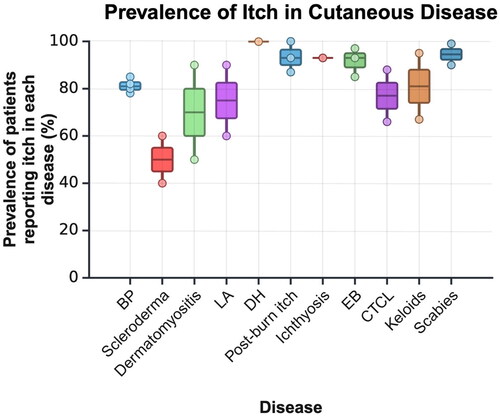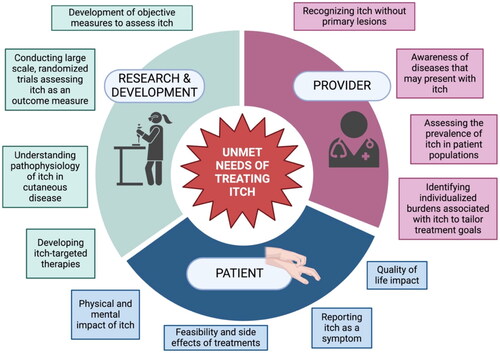Figures & data
Figure 1. The overall prevalence of conditions presenting with chronic pruritus in the general population. Prevalence data has been extracted from epidemiological studies referenced in this article.
CPUO: chronic pruritus of unknown origin, LSC: lichen simplex chronicus

Table 1. Summary of treatments approved by the FDA and current trials under investigation for the treatment of itch in various diseases.
Figure 2. The prevalence of itch in patients diagnosed with various genetic, autoimmune, and cancerous cutaneous diseases. The prevalence for each condition was extracted from epidemiological studies referenced in this review. Where multiple studies were available, all values were combined into boxes showing the 2nd and 3rd quartiles. The upper- and lowermost points on the vertical axis represent the minimum and maximum prevalences reported in each condition. Where only one epidemiological study was found, a horizontal line represents the prevalence instead of a box.
BP: bullous pemphigoid, LA: lichen amyloidosis, DH: dermatitis herpetiformis, EB: epidermolysis bullosa, CTCL: cutaneous t-cell lymphoma


